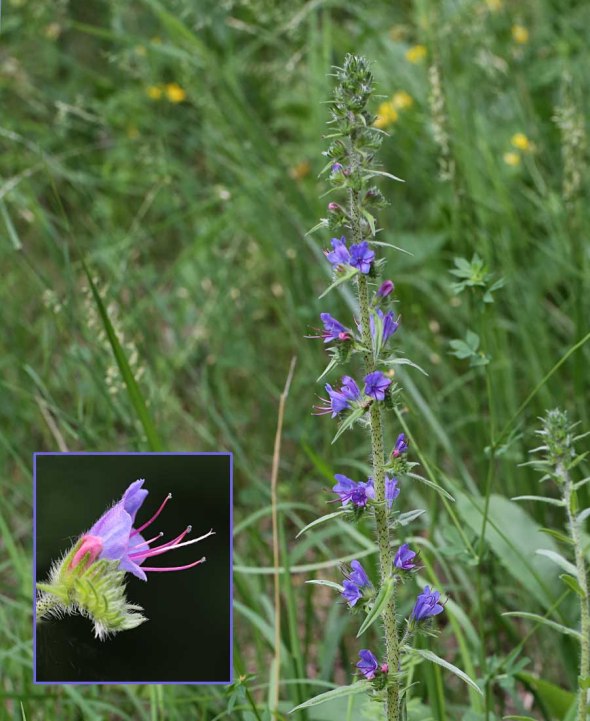Viper’s Bugloss Flowering
 Even if it weren’t such a beautiful and vibrantly-colored flower, Viper’s Bugloss, Echium vulgare, would be notable just for its name. “Bugloss” is of Greek origin, from a word signifying an ox’s tongue, and alludes to the roughness and shape of the plant’s leaves. Some say the dead flower-head and/or seed resemble a snake, and in the 1600’s this plant provided a popular cure for snake bites. A long-flowering (all summer and into the fall) member of the Boraginaceae family, Viper’s Bugloss is particularly popular with bees. It produces nectar throughout the day, unlike most plants which produce nectar for a short period of time. With an unlimited supply of Viper’s Bugloss, honeybees can collect between 12 and 20 pounds of nectar a day.
Even if it weren’t such a beautiful and vibrantly-colored flower, Viper’s Bugloss, Echium vulgare, would be notable just for its name. “Bugloss” is of Greek origin, from a word signifying an ox’s tongue, and alludes to the roughness and shape of the plant’s leaves. Some say the dead flower-head and/or seed resemble a snake, and in the 1600’s this plant provided a popular cure for snake bites. A long-flowering (all summer and into the fall) member of the Boraginaceae family, Viper’s Bugloss is particularly popular with bees. It produces nectar throughout the day, unlike most plants which produce nectar for a short period of time. With an unlimited supply of Viper’s Bugloss, honeybees can collect between 12 and 20 pounds of nectar a day.
Naturally Curious is supported by donations. If you choose to contribute, you may go to http://www.naturallycuriouswithmaryholland.wordpress.com and click on the yellow “donate” button.


















What Other Naturally Curious People Are Saying